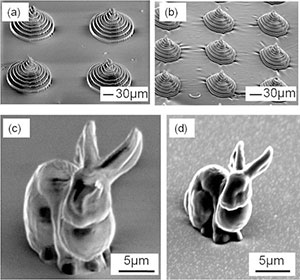When my grandfather developed Parkinson’s, I started undergraduate school as a Biological Sciences major. He knew this and pulled me aside during a family visit to tell me with a smile and a wink, “Maybe one day you’ll find a cure for me.” I failed him. However, a collaboration of scientists from Yokohama National University, Tokyo Institute of Technology, and C-MET Inc., a company that manufactures and distributes stereolithography (SL) systems and photo-curable resins, has developed new photopolymers with bionic brain possibilities. There was a lot of science involved and analyzed by minds much sharper than mine, yet essentially, a team led by Yuya Daicho, Terumasa Murakami, Tsuneo Hagiwara, and Shoji Maruo addressed a problem and found a solution with 3D printing.

Biosensors have progressed with the burgeoning field of neuroscience that hopes to combat afflictions such as dementia and epilepsy previously perceived as inevitable debilities. These microstructures with the epoxy compound protecting carbonized conductivity and structural fidelity provides a template for biosensor productions. How biosensors work to fight against neurological afflictons from paralysis to blindness is via electrodes implemented in various portions of the brain to read and stimulate neural systems. The applications can be explained in a Popular Science article. It is frigthening and disarming to watch someone melt away from you due to Parkinson’s as I am sure it is for various other mental afflictions. The pervasive melancholy and sense of loss may be a contemporary experience as driven research ushers in new information in neuroscience. In the wake of discovery blooms innovation so that even if I failed, we have a bright future.
Source: PopSci



